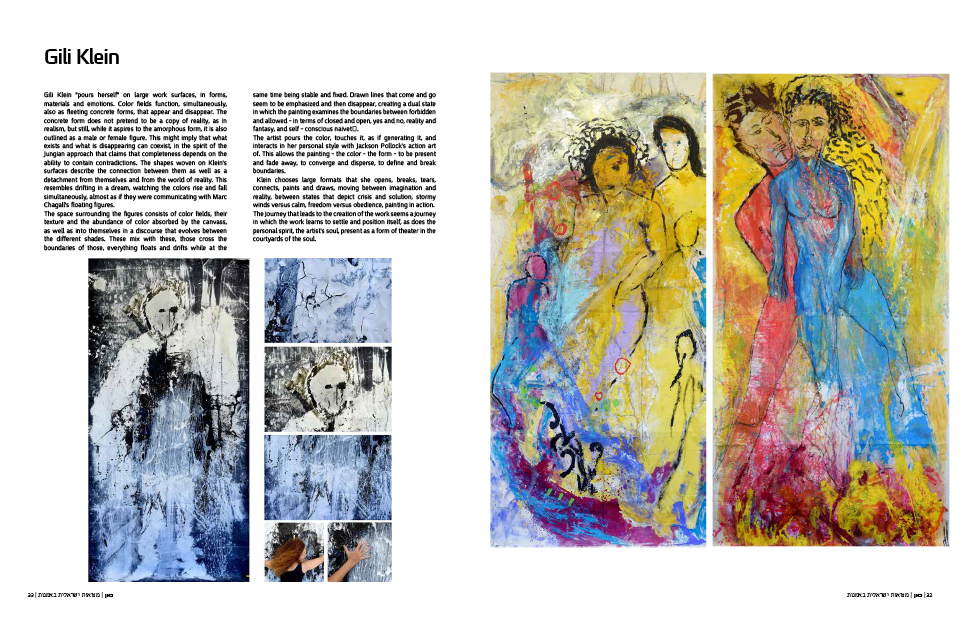
| Home Page | Editor Notices | Museums | Galleries | Publication | Donation | Contact Us |


 | |||||||||||||||
| |||||||||||||||


| |||||||||||||||
| Gili Klein |
Gili Klein "pours herself" on large work surfaces, in forms, materials and emotions. Color fields function, simultaneously, also as fleeting concrete forms, that appear and disappear. The concrete form does not pretend to be a copy of reality, as in realism, but still, while it aspires to the amorphous form, it is also outlined as a male or female figure. This might imply that what exists and what is disappearing can coexist, in the spirit of the Jungian approach that claims that completeness depends on the ability to contain contradictions. The shapes woven on Klein's surfaces describe the connection between them as well as a detachment from themselves and from the world of reality. This resembles drifting in a dream, watching the colors rise and fall simultaneously, almost as if they were communicating with Marc Chagall's floating figures. The space surrounding the figures consists of color fields, their texture and the abundance of color absorbed by the canvass, as well as into themselves in a discourse that evolves between the different shades. These mix with these, those cross the boundaries of those, everything floats and drifts while at the same time being stable and fixed. Drawn lines that come and go seem to be emphasized and then disappear, creating a dual state in which the painting examines the boundaries between forbidden and allowed – in terms of closed and open, yes and no, reality and fantasy, and self – conscious naivet?. The artist pours the color, touches it, as if generating it, and interacts in her personal style with Jackson Pollock's action art of. This allows the painting – the color – the form – to be present and fade away, to converge and disperse, to define and break boundaries. Klein chooses large formats that she opens, breaks, tears, connects, paints and draws, moving between imagination and reality, between states that depict crisis and solution, stormy winds versus calm, freedom versus obedience, painting in action. The journey that leads to the creation of the work seems a journey in which the work learns to settle and position itself, as does the personal spirit, the artist's soul, present as a form of theater in the courtyards of the soul. Dr. Nurit Cederbaum Read more  |
| all rights reserved - CAN ISRAELI ART REALITY |
| סייבורג מחשבים - בניית אתרים |